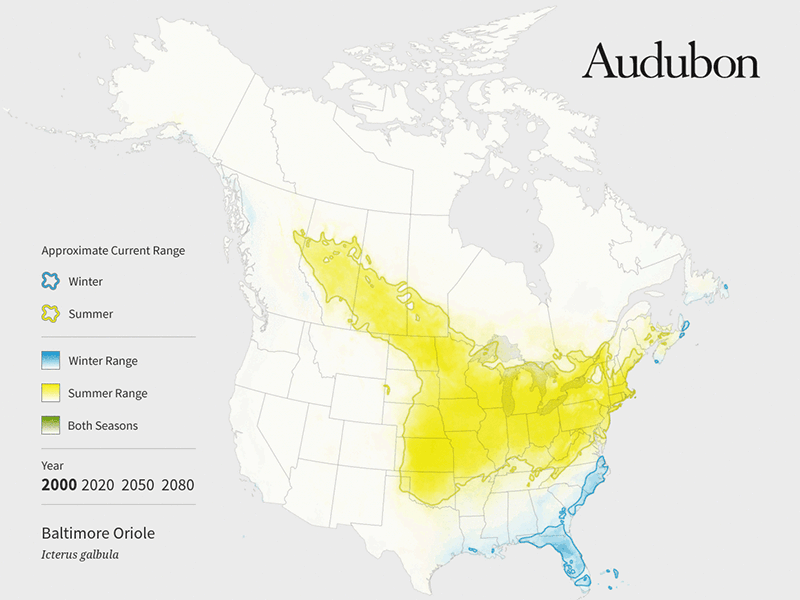 |
| The shift north of species image credit: National Audubon Society via npr.org |
I heard David Yarnold, president and CEO of the National Audubon Society, on NPR talk about a new seven-year study the organization has done that warns that the migratory routes and habitats of more than half of the birds in North America are now or soon will be threatened by climate change.
I still hear arguments against climate change forecasts that are sometimes labeled as "alarmist" but Yarnold says that "... there are forecasts that are far more extreme than this report. If anything, this report is conservative. At every step of the way, we took great care to not overstate data or conclusions. Nothing would make us happier than to be wrong about the fate of many of these birds."
The study, "314 Species on the Brink," look at the entire continent, but you can look close up at New Jersey. The bald eagle, a species that in New Jersey has finally been brought "back from the brink" of being extirpated and endangered, could see its current range decrease by nearly 75 percent in the next 65 years.
One NJ species is the American kestrel.
Photo: Nathan Rupert/Flickr Creative Common via audubon.org
"This colorful little falcon is in serious trouble in some parts of the continent. Yet populations are stable or increasing elsewhere. With the American Kestrel and so many other geographically widespread species, it is essential to engage management and conservation on a region-by-region basis. The Audubon model forecasts overall winter gains and summer losses for the species, but the bigger story is substantial northward movement of suitable climate space at both times of year. The decline of nesting American Kestrels in the northeastern U.S., well along already, seems likely to proceed, perhaps to the point of regional extirpation in New England and the Mid-Atlantic states."
The common loon, an iconic bird in Minnesota and Maine, may no longer be able to breed in the lower 48 states as soon as 2080, according to the report.
| Oriole photo credit: Universal Images Group /Getty Images via npr.org |
The story highlighted Baltimore orioles, a species that is so beloved in Maryland that their major league baseball team bears its name. These orioles are migrating birds and by 2080, there may not be any orioles left in Maryland because they could be forced to nest well north of the state.
In talking about the pace at which this change is happening, Yarnold says:
The report looked at North American birds. It's not likely that birds are going to migrate from Central and South America to replace them. But, remember, what we're talking about are changes at a pace and a scale that we've never seen before. These are the kinds of changes to habitat that have taken tens of thousands of years in the past. And what worries me is that these are the kinds of changes that my 9-month-old grandson could see in his lifetime.